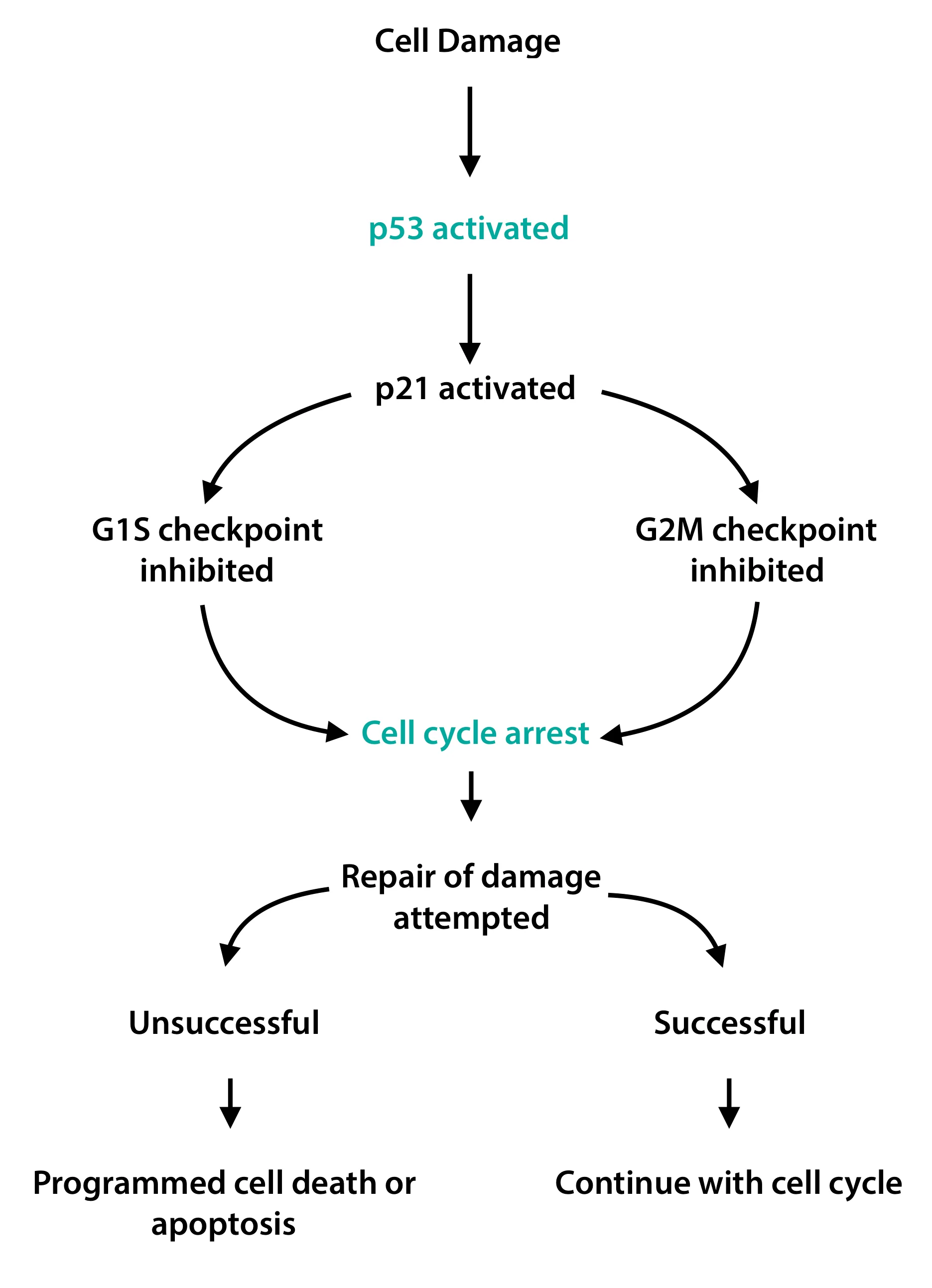p53 - Policeman of the Cell cycle
The fascination with health and disease is as old as human beings itself. But the obsession to understand the uncontrolled growth of a part of the human body seems almost normal. Yet, despite decades of research, today, we know very little about the pathological process called neoplasia.
Neoplasia comes from the Greek words “Neo-” meaning “new” and “-plasia” meaning “formation.” Today, neoplasia is defined as an uncontrolled proliferation of one or multiple types of cells in our body. Sometimes these proliferations are microscopic and self limiting and we can barely see them. Sometimes they are rampant and unrelenting and grow to gross proportions. So how do the cancer cells decide? How do they stop growing at a certain point? How do they start going so out of control to start with?
Of course, understanding the totality of the process that is cancer is beyond the scope of any single article. With that in mind, we are going to try and explain a small part of the pathogenesis of cancer in this article. Before you read this article further, it will be useful to read the Firstclass article on cell cycle so that you can better understand the concepts that follow.
The fundamental issue with cancer is that the normal regulation of cell division goes a little haywire. So either, the signals that promote cell division (known as proto-oncogenes) are over expressed or the signals that normally stop excess cell division (known as tumor suppressor genes) are insufficient.
Now, if you ask any med student about the genes that cause cancer, he or she will enthusiastically rattle of a long list of letters and names. Kit. PET. RET. RAS. myc. SMAD. BRCA. NF. And the list will just keep going on and on. But there is a very special gene that medical students will very frequently associate with malignancy because of how often it shows up in their reading: p53.
Now p53 is a special gene. In fact, its so special that it has not one, but multiple cool nick names! p53 is commonly known as the “policeman of cell cycle.” But it has also been referred to as “the guardian of the genome,” the “Death Star,” and “good cop, bad cop.” So picture a bad ass sheriff, with a shiny gun ready to kill all the vermin in his town. That is basically p53. Why is p53 so special, though? And is it really as bad ass as they make it seem? Let’s find out a little more about it.
According to WHO, the most common mutation associated with neoplastic change in the world today is a p53 mutation. So it is the most common mutation? Big deal. Doesn’t make it such a bad ass. Well, here is the thing about p53. It does not directly cause cancer. p53 is a 53 kilo- Dalton protein that is coded for on chromosome 17. It is actually a tumor suppressor gene that acts by activating proteins that normally put brakes on the cell cycle.
Now here is the diagram of the cell cycle just to refresh your memory.
Remember that the cyclin and cyclin dependent kinase systems that allow the cell to cross the cell cycle check points are inhibited by a group of proteins called the P proteins. Now there are two groups of P proteins.
Cip Kip family: p21, p27, p57
INK 4a: p14, p16
The family that we are interested in is the Cip Kip family. Specifically p21. You see, in a normal person p53 gets activated anytime the cell comes under stress. Hypoxia, toxic damage, physical stress etc are all stimuli that activate p53. On becoming active, p53 activates p21. p21, in turn, inhibits the progress of the cell immediately. So the cell is now in pause mode. At this point, the repair mechanisms of the cell kick in and try to repair the damage. If these mechanisms are successful, then the cell is fixed and continues to divide. However, if the cell is beyond repair, it is sentenced to death by programmed cell death or apoptosis.
This here is why p53 is called the policeman of the cell cycle. He sees cells that can potentially be troublesome, catches them, detains them and tries to fix them. If they get fixed, then he lets them go back to their jobs. If they refuse to comply, then he kills them. Pretty hard core right?
Now imagine if this cop got corrupted. Imagine if he got paid off to basically ignore any suspicious activity and look the other way. This is essentially what happens when there is a p53 mutation. With no functional p53, p21 is not activated and the cell cycle proceeds without any hindrance at all and this forms a platform for cancer cells to grow without being checked.
Now mutations of the p53 gene are so common that the cluster of malignancies caused by p53 mutations has been given a name: LiFraumeni Syndrome. It is accepted today that people with Li Fraumeni syndrome have a 100% chance of developing a cancerous growth by the age of 70. Imagine that. A hundred percent chance of malignancy. Seems unthinkable doesn’t it? And yet there are people who are alive today knowing that they are going to get a cancer.
Today we understand that the genetic basis of cancer is something we need to understand and explain in order to predict the occurrence of certain malignancies and, in some cases, even prevent them. p53 is the first of many cancer related genes that need to be identified and explained because this understanding will allow us manipulate and target treatments specifically directed against these aberrant cancer cells.
Author: Narendran Sairam (Facebook)
Sources and citations
Kumar, Vinay, Abul K. Abbas, and Jon C. Aster. "Neoplasia/p53." Robbins Basic Pathology. 9th ed. Philadelphia: Elsevier Saunders, 2013. 180-84. Print.


